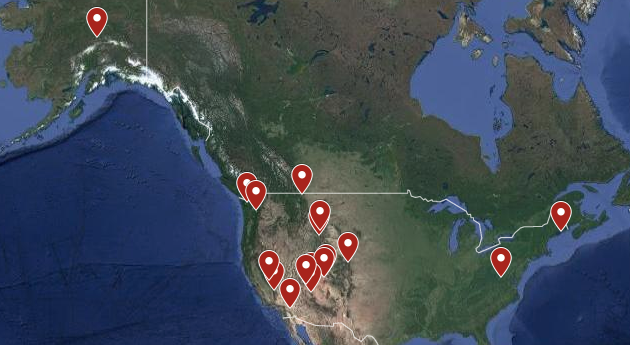Entrance fees to some of the most popular national parks in the country are slated to more than triple this year, despite protest by former advisors to the Department of the Interior.
The scheduled fee hikes come only two years after a substantial fee increase in many of the same parks.
These fee increases would be implemented at 17 national parks. There’s Denali in Alaska; the Grand Canyon in Arizona; Yosemite, Joshua Tree and Sequoia and Kings Canyon in California; Rocky Mountain in Colorado; Acadia in Maine; Glacier in Montana; Arches, Bryce Canyon, Canyonlands and Zion in Utah; Shenandoah in Virginia; Mount Ranier and Olympic in Washington state; Grand Teton and Yellowstone in Wyoming over the course of 2018.
Currently, the average cost of entrance to one of these national parks runs at $30 per car, $25 per motorcycle and $15 per person traveling on bicycle or foot, though that varies from park to park. The proposed costs would drive the cost of driving car into a park up to $70, a motorcycle, $50, and a pass for someone on foot or bike, $20. That quickly adds up for families taking a hiking or bike trip onto a small stretch of park land, especially given they exert the least amount of erosion on the infrastructure.
In January, ten of the 12 National Parks Advisory Board Members resigned en masse over what former Alaskan governor and board chairman Tony Knowles, termed frustration with an inability to perform the board’s functions. This leaves the U.S. sans a body that can designate national historic or natural landmarks.
During the board’s tenure under President Donald Trump, the board members alleged that despite requesting to meet multiple times, their missives to Secretary of the Interior Ryan Zinke were never answered.
“We understand the complexity of transition but our requests to engage have been ignored and the matters on which we wanted to brief the new Department team are clearly not part of its agenda,” Knowles wrote in a letter to the secretary
Over the course of 2017, changes to the National Parks were floated, chief among which was a removal of the ban on plastic water bottles in our parks, as well as an increase in visitor fees to the 17 most popular parks in the U.S.
While Zinke stated that the fee increases are needed for infrastructure renewal and upkeep of the parks, opponents fear that it will further restrict access to low-income families and people of color, who on the whole simply have less money than white Americans.
Not coincidentally, the National Park System is overwhelmingly enjoyed by white Americans. In 2017, 282 million people visited the national parks system. However, a 2009 survey conducted by the National Parks System found that only 22 percent of its visitors were people of color, something the Obama administration made a priority to change.
In the same 2009 survey 20 percent of respondents indicated that the reason they did not visit the parks was due to the cost of the entrance fees. Three fee increases later, that remains a barrier today to casual and impoverished visitors.
How will this affect your upcoming trip to any of the 17 parks? Check out the map of the National Parks Services to see the fees increases over the past five years, as well as how this could hit your wallet in the future.

